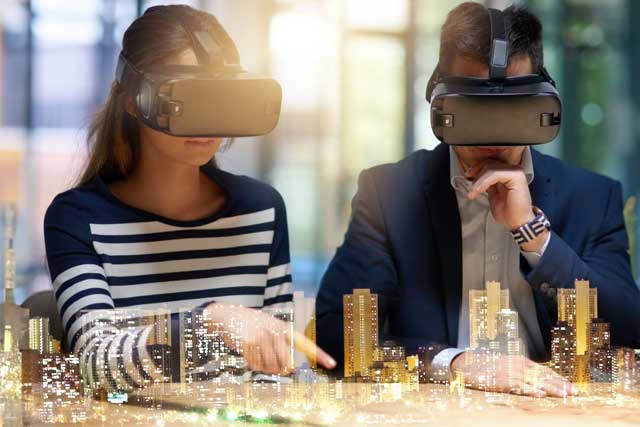VR in Real Estate: A Game-Changer
The real estate market is rapidly expanding, and VR technologies are accelerating this growth. By offering immersive experiences, virtual reality allows clients to explore properties in ways traditional methods cannot. As a result, VR real estate has become one of the most transformative innovations in the industry, enabling business owners to showcase the true potential of their offerings.
Today, almost every VR app development company provides services in this space. For agencies looking to upgrade house tours, immersive technologies are the perfect solution. VR not only enhances customer experiences but also helps increase sales by offering clients an interactive, hands-on view of properties.

With the ability to visualize and even interact with real estate products, buyers are far more likely to make decisions quickly. That’s why 3D VR property tours have become a standard tool among modern real estate agents.
Market Overview
Initially, VR platforms were seen as luxury gadgets for entertainment. Over time, devices like Oculus Rift and HTC Vive became more affordable, expanding into consumer markets. While gaming dominated early adoption, businesses have recently discovered the potential of VR—including real estate.
According to Goldman Sachs, by 2025 over 1.4 million realtors are expected to use VR technology, making it a mainstream industry tool. Companies like Compass, Zillow, and Sotheby’s International Realty have already integrated VR into their operations, setting the pace for others. But the opportunity is still wide open for agencies ready to adopt immersive technology today.
Key Benefits of VR in Real Estate
Virtual reality brings measurable advantages to both buyers and sellers. According to Statista, the AR/VR/MR market—valued at $28B in 2021—is projected to surpass $250B by 2028, highlighting its growth potential.
Here’s how VR benefits real estate professionals:
- Fewer Property Visits – Buyers can explore homes virtually from anywhere, reducing unnecessary travel and saving time.
- Immersive Experiences – Interactive tours help clients feel connected to a property before ever stepping inside.
- Cost Savings – While developing 3D tours can be expensive upfront, they save costs on printed materials and multiple showings.
- Stronger Buyer Connection – Experiencing a home in VR often gives buyers a stronger sense of ownership, increasing purchase likelihood.
- Global Reach – VR eliminates geographical limits, making international property showcasing seamless.
With these benefits, VR staging and visualization significantly boost marketing impact, helping agents promote properties more effectively while cutting costs.
Use Cases of VR in Real Estate
- Virtual Property Tours – Interactive or guided 3D tours let buyers view homes anytime, from anywhere. VR headsets enable clients and agents to walk through properties virtually, increasing convenience and engagement.
- Virtual Staging & Pre-Construction Visualization – Sell properties before they’re built or furnished by showcasing 3D designs of interiors and exteriors. This eliminates limitations caused by empty homes or incomplete projects.
- V-Commerce Integration – Virtual tours can be customized for buyers, letting them change layouts, test furniture options, or explore design ideas. This personalization strengthens engagement and decision-making.
- Tenant Instructions – VR makes communication between landlords and tenants smoother, especially for vacation rentals or long-term leases, reducing the need for in-person interactions.
- Architectural Visualization – Agencies can create 3D models to present detailed exteriors and interiors, helping clients better understand designs without physical showrooms.
Building a VR Real Estate Experience
Before developing a VR solution, businesses should consider:
- Platform Choice – Decide whether to target VR headsets (Meta, HTC, PlayStation VR, Valve Index) or more accessible platforms like mobile and web.
- Software Tools – 3D modeling software (ZBrush, Maya, 3DS Max) combined with engines like Unity or Unreal are standard for VR development.
- Tour Type – Guided tours provide structured experiences, while interactive tours give clients freedom to explore.
- Animations & Interactivity – Add realistic features such as doors, windows, and lighting for a more engaging experience.
- BIM Integration – Incorporate building data (wiring, plumbing, structural details) for deeper insights into properties.
Though development may seem complex, many studios specialize in creating VR solutions for real estate, making partnerships a practical option.